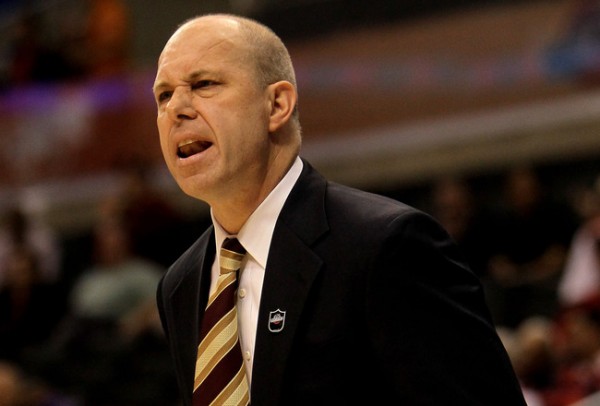Highlighting Six Power Conference Coaches Feeling the Heat This Season
Posted by Chris Johnson on November 1st, 2012 Chris Johnson is an RTC Columnist. He can be reached @ChrisDJohnsonn.
Chris Johnson is an RTC Columnist. He can be reached @ChrisDJohnsonn.
Expiration dates on coaching tenures vary based on a variety of different factors. Signs of positive momentum and progressive change no doubt correlate positively long coaching tenures, but there are other elements involved: Program expectations, buyout fees, revenue accumulation, recruiting success, and so on. The checklist differs at each program, which makes nailing down a hard-and-fast list of general standards practically impossible. Despite the vague criteria that define the profession, and the fundamental truth that administrators – not fans, players or boosters – make the final call on coaches’ job statuses, we enter every college basketball season with a pretty good idea of where each coach stands in his current state of employment. Perhaps the most obvious trend, the one most easily spotted across a wide sample of coaches, is the fateful decline. Win totals plummet, fan support wanes, administrators stay mum while perusing the market for a replacement – then, the rumors, the denial, the wait and, last but not least, the long-expected press release signaling the end of a coach’s time at the program. Pretty boilerplate stuff. The path to the dreaded fall is fairly predictable. What follows are six coaches (one from each of the power conferences) feeling the heat this season. All of them may or may not last the year, but there’s a decent chance at least one of these guys will get the axe by next April. To quantify this hot seat breakdown, I’ve added a meter that gauges a coaches’ “heat level” on a 1-through-5 scale. I wish these coaches well, but their inclusion here is not a positive way to begin the season.
Herb Sendek (Arizona State)
Heat Meter: 4

Unless Sendek leads a major renaissance in Tempe this season, he could find himself out of a job (photo credit: Getty Images).
In most years, finishing with a 6-12 record in the Pac-12 is not a terrible result. Winning in league play is difficult, and winning in one of the nation’s better high-major conferences is even more difficult. Notching six wins won’t get you into NCAA Tournament (or even NIT) consideration, but it’s hardly a death sentence, either. The problem with this line of thinking is that last season’s Pac-12 was not the usual Pac-12. It was awful – so bad that regular season champion Washington didn’t qualify for an at-large bid. Considering the league’s top-to-bottom futility last season, managing just six wins is proof enough to raise serious questions about the direction of Arizona State’s program. Now Sendek finds himself at a crossroads: after last year’s disappointment, two of his best assistants left the program, including one, Lamont Smith, who joined Lorenzo Romar’s Staff at Washington. When you’re losing your top assistants to league competitors, job security develops a tenuous, even artificial, feel. Sendek can save his position if the Sun Devils show noticeable signs of improvement, and with highly-touted recruit Jahii Carson eligible this season, that’s a reasonable expectation to have. Another six-win league total – and this year, six Pac-12 wins won’t be as easy to come by – is a doomsday scenario.









































